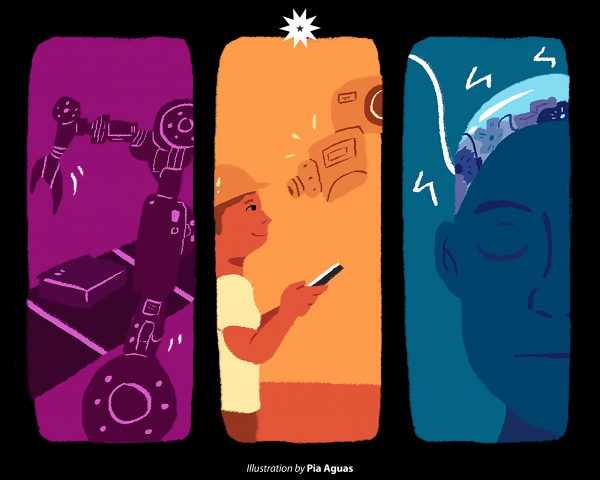Revolutionizing almost every industry—from retail to healthcare to public transportation—and changing how humans live and work, the integration of artificial intelligence (AI) and robots into workplaces and homes only point to one thing: the future.
Yet as these machines permeate various sectors of society, uncertainty and fear similarly pervade over the possibility that these machines, being tireless and highly adaptable, could replace and overtake mankind. Although experts posit that the advancement of these technologies would not be the twilight of the human workforce as many of us might expect, this comes at a condition—humans staying in control.
A case of imitation
Since its inception in 1956, AI has gradually been incorporated into our daily lives, sometimes in ways that go unnoticed. From recommendation algorithms that fuel binge watching on Netflix and YouTube by suggesting new but similar content based on the user’s watch history, to the processing power of search engines in finding the information one is looking for, AI plays a major role in the transformation and development of modern society.
In the case of robots, the term itself is “broad”, admits Manufacturing Engineering and Management (MEM) Department Associate Professor Dr. Renann Baldovino, citing that there is a growing public confusion regarding the distinction between AI and robots. He argues that unlike AI, robots fall under the “mechanical, physical side” of things. “There are humanoid robots that do anything beyond walking; they can dance, entertain…That is why when [people] talk about [humanoid] robots, they think about AI because they are human-like,” Baldovino clarifies.
Software Technology Department Associate Professor Dr. Ethel Ong affirms this, furthering that the concept of AI “goes beyond giant machines doing heavy lifting and robots reaching human levels of intelligence.”
Meanwhile, Courtney Ngo, an assistant professor from the same department, explains that the learning process of AI involves mimicking human intelligence based on data given to the machine. An artificially intelligent software may, for example, use existing data on a dog’s appearance in terms of size and anatomy in order to recognize common patterns and learn to distinguish pictures containing a dog.
Similarly, Ong says that the original definition of AI is “to mimic human abilities”—like speaking, writing, or doing work. Unsurprisingly, this also brings to the table the fear of humans being replaced by computers in the workforce, leading to mass unemployment.

Understanding the fear
The transition to using robots and automated systems is already happening in developed countries where human roles in factories involve monitoring tasks rather than manual labor, says Ong. In the Philippines, however, various industrial and manufacturing operations still rely heavily on human labor in production.
Baldovino notes that some jobs are already being lost to automation, such as manufacturing plants that are laying off operators. “They are smarter than us. But in terms of decision making skills, humans are still better or superior [compared to AI],” he admits, pointing out that AI systems’ learning is largely based on computations.
At least for the Philippines, we have yet to reach the point where robots and AI going rogue seem a tangible possibility, much less encountering “perfect AI”—which Baldovino explains are those that have self-awareness, emotional perception, and socialization capabilities.
Nevertheless, the MEM faculty insinuates that a “rogue” future is not entirely impossible, acknowledging that AI and robots are the “future of technology”. “AI itself is based on intelligence and adapts to even current technologies. Technically, they can adapt [faster than us],” Baldovino warns.
Decoding misconceptions
The main objective of integrating robots into the workforce has not been to get rid of humans entirely, but rather to preserve them. As in Computer-Aided Manufacturing, the utilization of computers for the majority of the operations tends to lessen direct human involvement in the manufacturing process, minimizing exposure to risky working conditions and safety hazards. This also takes advantage of the capabilities of machines whose performances significantly surpass that of humans in terms of efficiency and speed.
Both Ong and Ngo affirm that AI will not devour the job market, but will instead be a “tool” for workers. This idea of human-to-robot collaboration is called augmented intelligence. Ong uses the navigation application Waze as an example. Waze uses algorithms to determine optimal route for traveling from one destination to another in the shortest amount of time, but the user still has the liberty to choose which path to follow.
“In the end, you’ll decide [to] turn left [or to] turn right; you [can] choose [to pass through either] Vito Cruz [St.] or Quirino [Ave.],” Ong discusses.
Baldovino offers similar insights, concluding, “The main idea still is that we should be the ones controlling technology, [not the other way around]. We cannot become its puppet. We should maintain the balance.”
